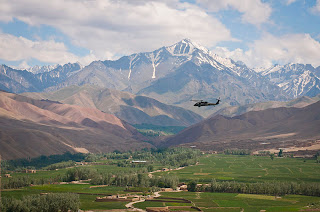In antiquity, central Afghanistan was strategically placed to thrive from the Silk Road caravans which criss-crossed the region trading between the Roman Empire, China, Central and South Asia. Bamyan was a stopping off point for many travellers. It was here where elements of Greek and Buddhist art were combined into a unique classical style, known as Greco-Buddhist art. Bamyan has several famous historical sites, including the famous Buddha statues with more than 3,000 caves around it, the Band-e Amir, Dara-i-Ajhdar, Gholghola and Zakhak ancient towns, the Feroz Bahar, Astopa, Klegan, Gaohargin, Kaferan and Cheldukhtaran.
 Bamiyan History
Bamiyan History The Bamiyan Buddhas stood in a valley that has seen great changes through the centuries. One of its most vibrant periods was also one of its earliest. During the ancient period, this region served as an important point along the Silk Road which created a place where cultures mixed and influences were highly varied. These influences included China, ancient Rome, and India. The area was mostly home to the Buddhist religion though. The religion was born in the approximate area and flourished in the Gandharan region, which includes the Bamiyan valley. This area hit a peak with Emperor Chandragupta Maurya and even furthered its power and wealth during the rule of Ashoka, who was not only a great ruler but also a practitioner of Buddhism. Buddhist monasteries were not the most usual of structures in this era, around the 5th Century CE. Monks would usually live in carved out caves or grottoes that were connected to or near chaityas, which were sanctuaries also carved out of the living rock. The Bamiyan valley is full of these caves and inside them many pieces and works of art can be found. Most frequently statues were created or paintings done on the wall, almost all devotional in nature. The colossal Bamiyan Buddhas were extraordinary
Band e Amir in Bamiyan Afghanistan's National Park
Band-e Amir National Park is the first national park of Afghanistan. It is a stunning group of turquoise lakes in the Eastern zone of the country, in the Bamyan Province. It sits high in the Hindu Kush at an altitude of 2900m, and in 2013 about 6,000 local tourists visit the site each year. The area is protected by a small number of park rangers and most of the landmines are cleared.
Band-e Amir is a series of six incredibly deep blue lakes in the heart of the central Afghanistan. The lakes are situated in the foothills of the Hindu Kush, the second highest mountain range in the world, 80 kilometers from the ancient town of Bamiyan, where the Taliban destroyed the world’s tallest Buddha statues in 2001. Surrounded by pink towering limestone cliffs almost in complete lack of vegetation, the stunning lakes seems totally out of place.
The beautiful lakes were created by the carbon dioxide rich water that is drawn from the spring melt-water in the surrounding mountains and came out from faults and cracks in the rocky landscape. This outflow of water percolates slowly through the underlying limestone, dissolving its principal mineral, calcium carbonate. Over time, the water deposited layers of hardened mineral (travertine), which created dams that trap water in increasingly large basins. These dams are usually about 10m high and 3m wide. Water cascades from one lake to the other near travertine terraces serving as massive natural dams between the lakes.
The deep blue color of the lakes is due to the clarity of the air as well as the purity of the water. The high mineral content of the lakes also causes the intense and varying colors of the lake waters.
Of the six lakes, Band-e Panir is the smallest, with a diameter of approximately 100m (330ft). The largest is Band-e Zulfiqar, which measures some 6.5km (4mi) in length. The most accessible of the lakes is Band-e-Haibat, literally translated as Dam of Awe.
Band-e-Amir had been a destination for travelers since the 1950s. The lakes became a national park only in 2009, although their beauty was recognized much earlier, in 196o. But due to the instability of the government at that time, it wasn't recognized as a national park. Covering approximately 230 square miles, Band-e Amir is Afghanistan’s first and only national park and it also features on UNESCO World heritage list.
Attention: If you believe a photo is your copyright please feel free to contact us for mentioning your source or for deletion thank you.














































0 comments:
Post a Comment